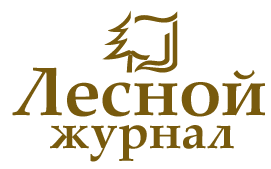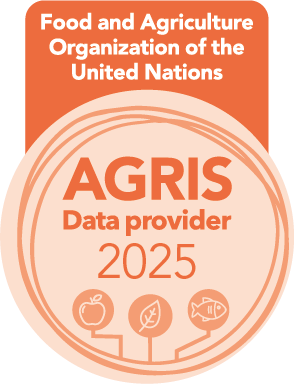

Address: Naberezhnaya Severnoy Dviny, 17, Arkhangelsk, 163002, Russian Federation, Northern (Arctic) Federal University named after M.V.Lomonosov, office 1425
Phone: +7 (8182) 21-61-18
E-mail: forest@narfu.ru
http://lesnoizhurnal.ru/en/
|
Plantation and Wild Cranberry Vaccinium oxycoccos L. in the Southern White Sea Type Swamps. С. 93-106
|
 |
Selyanina S.B., Kutakova N.A., Selyanina A.I., Zubov I.N., Kononov K.A.
UDС
634.739.2:581.192
DOI:
10.37482/0536-1036-2025-3-93-106
Abstract
Several varieties of swamp cranberry (Vaccinium oxycoccos L.) and hybrids bred by the Central European Forest Experimental Station (Kostroma) are being tested at the “Arkhangelsk Cranberry” plantation (Kholmogorsky District, Arkhangelsk Region). The aim of the study has been to compare the chemical composition and organoleptic properties of berries of different varieties grown on the plantation and wild ones. Berry samples were collected from the plantation and the neighbouring swamp (wild harvest) in the fall of 2020 and 2022 and stored in the freezer. The organoleptic properties have been assessed by the tasting method; berry size has been determined with 20 repetitions. To determine the moisture and ash content, as well as the amount of organic acids, generally accepted methods of analysis have been used; for the amount of ascorbic acid, the Tillmans method has been used. Spectroscopy of aqueous berry extracts has been carried out in the range of 200–800 nm. According to the results of visual evaluation of the berries and measurement of their size, the uniformity of the fruits of the 635-V hybrid and the Fomich variety has been noted. The moisture content of all samples has been almost the same – from 88.0 ± 0.2 to 90.0 ± 0.1 %. The ash content has been reduced, fluctuating from 1.09 ± 0.06 to 1.39 ± 0.12 % of a. d. v. The maximum amount of organic acids (25–26 % a. d. v.) has been found in the berries of the Fomich variety and the 635-V hybrid, the minimum – in wild berries (19–20 % of a. d. v.). In terms of ascorbic acid content, they surpass other wild plants and hybrids. The spectra of aqueous extracts of berries are uniform. The study of the characteristics of the berry composition allows us to consider the Fomich variety and the 635-V hybrid the most promising for therapeutic nutrition, beverage and confectionery production. Wild cranberries have a high score of organoleptic parameters, colour and aroma (smell), however, as a vitamin supplement they are less attractive than those grown in other regions. The results of the study of the composition and properties of berries allow us to recommend plantation cultivation of cranberries in the swamps of the Southern White Sea type due to its increased yield.
Authors
Svetlana B. Selyanina1, Candidate of Engineering, Assoc. Prof.;
ResearcherID: AAG-4781-2019, ORCID: https://orcid.org/0000-0003-0829-7518
Natalia A. Kutakova2*, Candidate of Engineering, Assoc. Prof.;
ResearcherID: T-1150-2019, ORCID: https://orcid.org/0000-0001-8195-2115
Anastasiya I. Selyanina3, Applicant; ORCID: https://orcid.org/0009-0008-9457-5505
Ivan N. Zubov1, Candidate of Chemistry, Senior Research Scientist;
ResearcherID: G-5351-2011, ORCID: https://orcid.org/0000-0003-3037-2449
Kirill A. Kononov1, Postgraduate Student; ORCID: https://orcid.org/0009-0002-7044-7687
Affiliation
1N. Laverov Federal Center for Integrated Arctic Research of the Ural Branch of the Russian Academy of Sciences, Nikolskiy prosp., 23, Arkhangelsk, 163000, Russian Federation; gumin@fciarctic.ru, zubov.ivan@bk.ru, k.kononov@list.ru
2Northern (Arctic) Federal University named after M.V. Lomonosov, Naberezhnaya Severnoy Dviny, 17, Arkhangelsk, 163002, Russian Federation; n.kutakova@narfu.ru*
3Northern State Medical University, prosp. Troitsky, 51, Arkhangelsk, 163069, Russian Federation; anastasiya.s.2020@yandex.ru
Keywordsswamp cranberry, organoleptic properties, ascorbic acid, organic acids, spectral characteristics
For citation
Selyanina S.B., Kutakova N.A., Selyanina A.I., Zubov I.N., Kononov K.A. Plantation and Wild Cranberry Vaccinium oxycoccos L. in the Southern White Sea Type Swamps. Lesnoy Zhurnal = Russian Forestry Journal, 2025, no. 3, pp. 93–106. (In Russ.). https://doi.org/10.37482/0536-1036-2025-3-93-106
References
- Arkhangelsk Geological Fund, inv. no. 329-T (29.03.2007). (In Russ.).
- Belova Ye.A., Tritek V.S., Shul’gau Z.T., Gulyayev A.E., Krivykh E.A., Kovalenko L.V., Drenin A.A., Botirov E.Kh. The Study of Phenolic Compounds of the Berries of Three Species of Plants of the Genus Vaccinium Growing in the Khanty-Mansi Autonomous Area. Khimija Rastitel’nogo Syr’ja, 2020, no. 1, pp.107–116. (In Russ.). https://doi.org/10.14258/jcprm.2020014534
- Borisenkov M.F., Bakutova L.A., Peshch A.V. Antioxidant Activity of Water Extracts Cranberry Fruit Vaccinium oxycoccus L., Growing on the Republic of Komi. Khimija Rastitel’nogo Syr’ja, 2014, no. 4, pp. 89–95. (In Russ.). https://doi.org/10.14258/jcprm.1304089
- Gorbunov A.B., Kukushkina T.A. Dynamics of the Chemical Composition of Berries of Introduced Cultivars and Forms of Cranberries in the Conditions of Central Siberian Botanical Garden SB RAS. Khimija Rastitel’nogo Syr’ja, 2021, no. 4, pp. 241–249. (In Russ.). https://doi.org/10.14258/jcprm.2021048977
- Gorlysheva E.S., Vashukova K.S., Kononov K.A., Soldatenkova M.V. Biotechnological Prospects for Cranberry Cultivation in Northern Russia. The Arctic Yesterday, Today, Tomorrow: Collection of Materials from the All-Russian Full-Time and Part-Time Scientific and Practical Conference Dedicated to the 220th Anniversary of the Birth of the Outstanding Polar Explorer Pyotr Kuzmich Pakhtusov. Arkhangelsk, 2020, рp. 272–276. (In Russ.).
- Donskikh V.G., Simakhin M.V., Nakonechnaya D.V., Pashutin V.R. Comparative Evaluation of the Fruit of the Bolt Cranberry (Oxycoccus palustris pers.) in the Conditions of the Moscow Region. AgroEcoInfo: Elektronnyj nauchno-proizvodstvennyj zhurnal = AgroEcoInfo: Electronic Science-Productive Magazine, 2022, no. 5. (In Russ.). https://doi.org/10.51419/202125508
- Eremeeva N.B., Makarova N.V. Study of the Content of Antioxidants and Their Activity in Concentrated Extracts of Cranberry (Vaccinium oxycoccus), Sea Buckthorn (Hippophae rhamnoides L.), Blackberry (Rubus fruticosus), Viburnum (Viburnum opulus L.) and Mountain Ash (Sorbus aucuparia L.). Khimija Rastitel’nogo Syr’ja, 2021, no. 4, pp. 157–164. (In Russ.). https://doi.org/10.14258/jcprm.2021049365
- Koldayev V.M. Integrated Indexes of Absorption Spectrums from Green Leaves Extracts. Izvestiya Samarskogo nauchnogo tsentra Rossijskoj akademii nauk = Izvestia of Samara Scientific Center of the Russian Academy of Sciences, 2017, vol. 19, no. 2 (3), pp. 463–467. (In Russ.).
- Korepanova D.D., Novikov I.L. Cultivation of Cranberries on Mineral and Peat Soils in the Conditions of the Udmurt Republic. Vestnik Udmurtskogo universiteta. Seriya: Biologiya. Nauki o zemle = Bulletin of Udmurt University. Series: Biology. Earth Sciences, 2011, iss. 3, pp. 43–46. (In Russ.).
- Krasnova S.I. Comparative Characteristics of Large-Fruited and Marsh Cranberry Varieties. Forest Management and Hydroforestry Reclamation: Part 1. St. Petersburg, Vologda, 2007, pp. 157–162. (In Russ.).
- Kutakova N.A., Bogdanovich N.I., Selyanina S.B., Koptelova E.N., Korovkina N.V. Laboratory Practical Training on the Technology of Biologically Active Substances and Carbon Adsorbents: in 2 Parts. Part 2. Analysis of Biologically Active Substances. Arkhangelsk, 2015. 114 p. (In Russ.).
- Lubenskaya S.I. Comparative Evaluation of Marsh Cranberry Varieties of the 2005 Harvest on the Plantation of the Zatonsky Experimental and Demonstration Forestry Enterprise. Forestry Complex of the Nizhny Novgorod Volga Region: Problems, Status and Development Prospects: Collection of Scientific Articles. Nizhny Novgorod, Nizhny Novgorod State Agricultural Academy, 2006, pp. 210–212. (In Russ.).
- Luginina E.A. Vitamin Content in Fruits of Wild Berry Plants of the North. Sovremennye tendentsii razvitiya tekhnologij zdorov’esberezheniya = Achievements and Perspectives for Design of New Herbal Medicines: Collection of Works of the 7th Scientific Conference with International Participation. All-Russian Scientific Research Institute of Medicinal and Aromatic Plants, 2019, рp. 222–228. (In Russ.).
- Lyutikova M.N., Botirov E.Kh. The Chemical Composition and the Practical Application of Berries Cranberries and Cranberry. Khimija Rastitel’nogo Syr’ja, 2015, no. 2, pp. 5–27. (In Russ.). https://doi.org/10.14258/jcprm.201502429
- Merkusheva N.N., Konyukhova O.M., Malkova E.B. Studying the Biochemical Composition of Cranberries Depending on the Variety and Species. Introduktsiya, sokhranenie i ispol’zovanie biologicheskogo raznoobraziya flory = Assessment, Conservation and Sustainable Use of Plant Biological Diversity: Materials of the International Scientific Conference Dedicated to the 90th anniversary of the Central Botanical Garden of the National Academy of Sciences of Belarus. Minsk, 2022, part 2, pp. 128–130. (In Russ.).
- Minaeva T.Yu., Sirin A.A. Peatland Biodiversity and Climate Change. Uspekhi sovremennoj biologii = Biology Bulletin Reviews, 2011, vol. 2, no. 2, pp. 164–175.
- Novikov I.L., Chirkova N.M. Increasing the Productivity of Forest Swamps in the Udmurt Republic by Introducing Large-Fruited Cranberries. Vestnik Izhevskoj gosudarstvennoj sel’skokhozyajstvennoj akademii: nauchno-prakticheskij zhurnal = The Bulletin of Izhevsk State Agricultural Academy: Scientific and Practical Journal, 2010, no. 4 (25), pp. 42–43. (In Russ.).
- Olennikov D.N., Tankhaeva L.M., Nikolaeva G.G., Markaryan A.A. Methodology for Quantitative Determination of Total Organic Acid Content in Plant Materials. Rastitelnye resursy, 2004, iss. 3, pp. 112–116. (In Russ.).
- Panov V.V., Misnikov O.S. Modern Trends of Development of Peat Industry in Russia. Trudy Instorfa, 2015, no. 11 (64), pp. 3–12. (In Russ.).
- Nutritional Value and Chemical Composition of “Cranberry”. (In Russ.).
- Rogozhin V.V. Biochemistry of Agricultural Products. St. Petersburg, GIORD Publ., 2014. 544 p. (In Russ.).
- Rupasova Zh.A., Garanovich I.M., Shpital’naya T.V., Pavlovskij N.B., Vasilevskaya T.I., Krinitskaya N.B., Drozd O.V., Lenkovets T.I., Frolova L.B., Pigul’ M.L. Introduction of Rare Fruit Crops in the Conditions of Belarus (Large-Fruited Cranberry, Highbush Blueberry, Actinidia arguta, Actinidia kolomikta, Actinidia polygama): Monograph. Ed. by V.N. Reshetnikov. Minsk, Belorusskaya nauka Publ., 2019. 210 p. (In Russ.).
- Simakhin M.V., Donskikh V.G., Nakonekhaya D.V., Ladyzhenskaya O.V. Polymorphism of Fruit Fruit of Cranberry (Oxycoccus palustris Pers.) in the Conditions of the Moscow Region. Vestnik Kurskoj gosudarstvennoj sel’skokhozyajstvennoj akademii = Bulletin of the Kursk State Agricultural Academy, 2022, no. 7, pp. 57–63. (In Russ.).
- Sirin A.A., Markina A.V., Minaeva T.Yu. Swampiness of the Arctic Zone of Russia. Swamp Ecosystems of North-East Europe and Problems of Ecological Restoration in the Permafrost Zone: Proceedings of the International Field Symposium. Syktyvkar, Institute of Biology of Komi Science Centre of the Ural Branch of the Russian Academy of Sciences, 2017, рp. 16–22. (In Russ.).
- Tatarintseva V.G., Selyanina S.B. Prospects for the Use of Peat Bog Resources in the Arkhangelsk Region. Ecology and Environmental Management. Environmental Safety of Territories (Problems and Solutions). Tomsk, 2021, iss. 4, рp. 91–93. (In Russ.).
- Tyak G.V., Kurlovich L.E., Makeev V.A., Makeeva G.U., Tyak A.V. Cranberry and Blueberry Production in Forest Lands Abandoned after Peat Production. Lesokhozyajstvennaya informatsiya = Forestry Information, 2015, no. 1, pp. 72–76. (In Russ.).
- Cherkasov A.F., Butkus V.F., Gorbunov A.B. Cranberry. Moscow, Lesnaya promyshlennost’ Publ., 1981. 214 p. (In Russ.).
- Berry Cooperative “Arkhangelsk Cranberry”. (In Russ.).
- Czepielewska E., Makarewicz-Wujec M., Różewski F., Wojtasik E., Kozłowska-Wojciechowska M. Drug Adulteration of Food Supplements: A Threat to Public Health in the European Union? Regulatory Toxicology and Pharmacology, 2018, vol. 97, pp. 98–102. https://doi.org/10.1016/j.yrtph.2018.06.014
- Garcia-Alvarez A., Egan B., de Klein S., Dima L., Maggi F.M., Isoniemi M., Ribas-Barba L., Raats M.M., Meissner E.M., Badea M., Bruno F., Salmenhaara M., Milà-Villarroel R., Knaze V., Hodgkins C., Marculescu A., Uusitalo L., Restani P., Serra-Majem L. Usage of Plant Food Supplements across Six European Countries: Findings from the PlantLIBRA Consumer Survey. PLOS ONE, 2014, vol. 9, iss. 3, art. no. e92265. https://doi.org/10.1371/journal.pone.0092265
- Mannino G., Di Stefano V., Lauria A., Pitonzo R., Gentile C. Vaccinium macrocarpon (Cranberry)-Based Dietary Supplements: Variation in Mass Uniformity, Proanthocyanidin Dosage and Anthocyanin Profile Demonstrates Quality Control Standard Needed. Nutrients, 2020, vol. 12, no. 4, art, no. 992. https://doi.org/10.3390/nu12040992
- Petroczi A., Taylor G., Naughton D.P. Mission Impossible? Regulatory and Enforcement Issues to Ensure Safety of Dietary Supplements. Food and Chemical Toxicology, 2011, vol. 49, iss. 2, pp. 393–402. https://doi.org/10.1016/j.fct.2010.11.014
- Tulio Jr. A.Z., Jablonski J.E., Jackson L.S., Chang C., Edirisinghe I., Burton-Freeman B. RETRACTED: Phenolic Composition, Antioxidant Properties, and Endothelial Cell Function of Red and White Cranberry Fruits. Food Chemistry, 2014, vol. 157, pp. 540– 552. https://doi.org/10.1016/j.foodchem.2014.02.047
|
Make a Submission


Lesnoy Zhurnal (Russian Forestry Journal) was awarded the "Seal of Recognition for Active Data Provider of the Year 2025"

|







